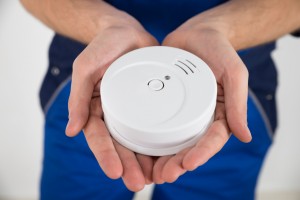blog post
fumes impact kids faster than adults
Many people turned on their heat recently to combat the chill of falling temperatures. That means it’s a perfect time to take a few precautions to avoid the “silent killer” – carbon monoxide.
 Carbon monoxide (CO) is an odorless, colorless and toxic gas. It kills more than 500 people and accounts for an estimated 15,000 emergency department visits each year in the U.S. Because it is impossible to see, taste or smell, CO can impact your family before you even know there is a problem. Kids are especially susceptible. CO can make a child seriously ill in amounts that would barely affect an adult.
Carbon monoxide (CO) is an odorless, colorless and toxic gas. It kills more than 500 people and accounts for an estimated 15,000 emergency department visits each year in the U.S. Because it is impossible to see, taste or smell, CO can impact your family before you even know there is a problem. Kids are especially susceptible. CO can make a child seriously ill in amounts that would barely affect an adult.
Key sources of CO are malfunctioning furnaces, water heaters, space heaters and fireplaces but keep in mind CO is produced anytime a fuel is burned. This is why CO poisoning strikes more in colder months than any other time in the year.
Signs of CO poisoning can be easily mistaken for the flu. They include headaches, dizziness, disorientation, nausea or fatigue. “If you suspect CO poisoning, patients should get checked right away. Dangerous levels in the patient can be detected quickly with a simple blood test,” says Lisa Schwing, RN, trauma program manager at Dayton Children’s Hospital. “Suspect CO poisoning when flu-like symptoms exist in more than one person in the household and symptoms seem to lessen in those who spend some time outside the home.”
Take a few easy precautions to keep your family safe:
1. Install a carbon monoxide detector on every floor of your home. Check batteries regularly.
2. Make sure that all your heating appliances are properly installed, venting to the outside and operating according to code.
3. Have furnaces and chimneys professionally inspected every year. Chimneys are easily blocked by bird nests or leaves.
4. Never run your car, or any other gas powered vehicle – like a lawn mower - in an enclosed area. Even if the door is open in the garage, fumes can accumulate quickly.
5. Check that your car’s exhaust pipe is clear to avoid fumes backing up into the car.
6. Never use gas ovens or ranges to heat your home.
7. Only use generators, grills, gas-powered tools and similar items outside. Avoid areas close to windows, doors or vents that could draw the fumes inside.
Take this time to secure your home and educate your family on the dangers that could be lurking within.

